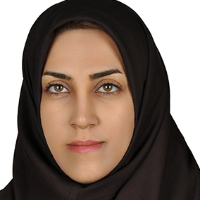Zoning of areas susceptible to cultivation of twenty medicinal plant species in Qom province using analytic hierarchy process model (AHP)
Introduction :
The increasing use of medicinal plants and their products has highlighted the role of these plants in the global economic cycle. As its increasing consumption is not only allocated to developing countries, but also is one of the important health factors in developed countries. The aim of this study was to zoning areas prone to cultivation of medicinal plant species and using the Analytic Hierarchy Process (AHP) model in Qom province.
For this study, by screening the criteria and options, 9 criteria were selected, include: (Elevation, Slope, Absolute maximum annual temperature, Absolute minimum annual temperature, Soil texture, Depth of soil, EC water, Access to water resources and Land use) and 7 options include: Thymus vulgaris, Lavandula angustifolia, Maticaria chamomilla, Melissa officinalis, Aloysia citrodora, Foeniculum vulgare and Rosmarinus officinalis. Using AHP model, the weight of each criterion was determined by pairwise comparison between them based on questionnaire information with a mismatch rate of 0.01 and using Expert Choice software. According to the weight assigned to each of the nine layers in the weighting stage in the AHP model, in the ArcGIS software environment in each of the layers, applied through the Weighted overlay algorithm and also for Operation Assurance The Raster Calculator algorithm was used to overlap the layers and the zoning map of Qom province in terms of areas prone to cultivation of medicinal plants was prepared for each of the 7 species of medicinal plants. The final map was classified into four categories or constraint classes, including: No constraints, low to medium constraints, medium to high constraints and high constraints.
Water shortage crisis is a threat; but by changing the cultivation pattern, it can be turned into an opportunity. Due to the hot and dry climate in the region, the cultivation of medicinal plants in areas such as Qom where the environmental and climatic conditions are stressful, can be much more suitable than the cultivation of cropsfrom an economic point of view. It is also cost-effective and has more added value. On the other hand, lack of complete knowledge about the various aspects of planting, holding and harvesting of medicinal plants from a scientific and technical point of view and the lack of a stable and reliable market for selling herbal medicinal products and continuous interaction between producers and consumers are some of the problems in this sector. The results showed that among the zoning criteria, the highest weight belonged to the EC water criterion with 30.3% and the lowest weight belonged to the land slope criterion with 3%. Is. According to the results obtained from the weighting of zoning criteria, in which more than half of the weight of 9 criteria belong to 2 criteria related to water, namely EC water with 30.3% and access to water resources with 23.3%. Percentage can be attributed to the importance and special position of water (both qualitatively and quantitatively) for the cultivation of medicinal plant species in the region in question, namely Qom province, where the predominant climate is arid and desert areas. After the production of zoning maps, it was found that in total, for areas susceptible to cultivation of 7 studied medicinal plant species, on average: 8.66% of the area in the first floor (without restrictions), 6.38 Percent is located in the 2nd floor (low to medium limit), 12.71% is in the 3rd floor (medium to high limit) and 71.97% is in the 4th floor (high limit).
The results showed that among the zoning criteria for areas susceptible to cultivation of medicinal plant species in Qom province, the highest weight belonged to the EC water criterion with 30.3% and the lowest weight belonged to the land slope criterion with 3%. After generating the zoning maps, it was found that in total, for areas susceptible to cultivation of 7 studied medicinal plant species, on average: 8.66% of the area in the first floor (without restrictions), 6.38 Percent is located in the 2nd floor (low to medium limit), 12.71% is in the 3rd floor (medium to high limit) and 71.97% is in the 4th floor (high limit).
- حق عضویت دریافتی صرف حمایت از نشریات عضو و نگهداری، تکمیل و توسعه مگیران میشود.
- پرداخت حق اشتراک و دانلود مقالات اجازه بازنشر آن در سایر رسانههای چاپی و دیجیتال را به کاربر نمیدهد.



